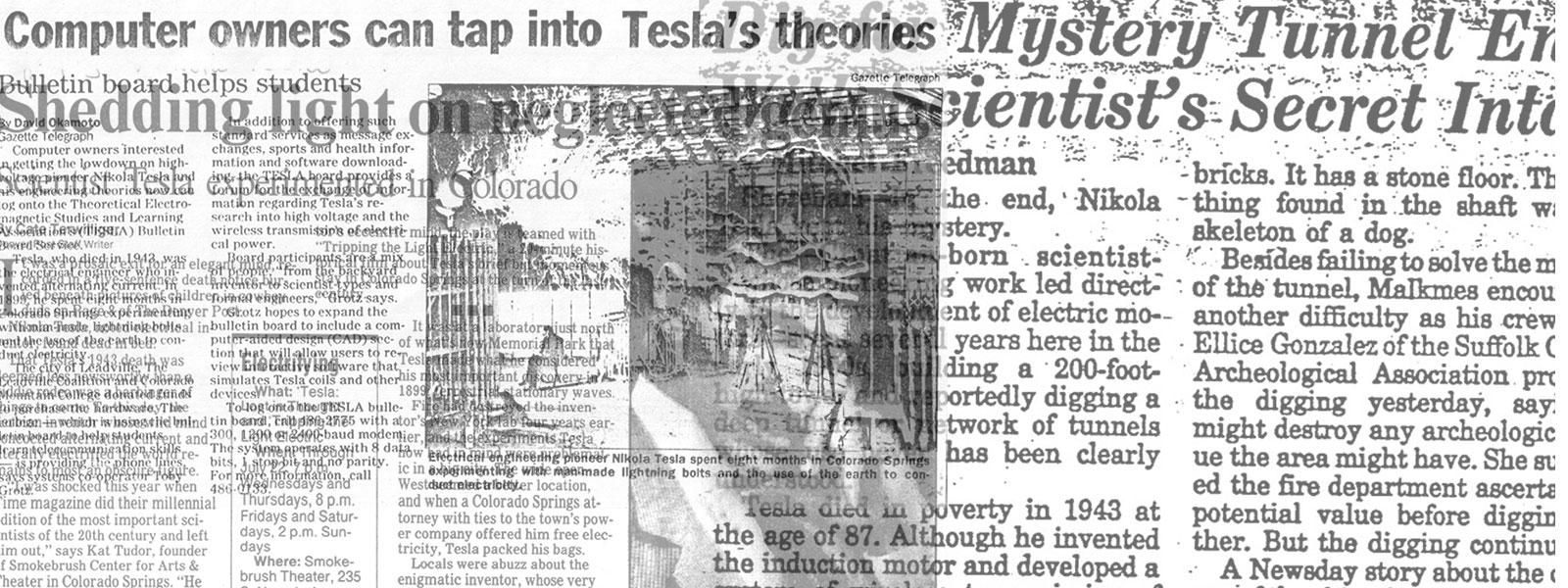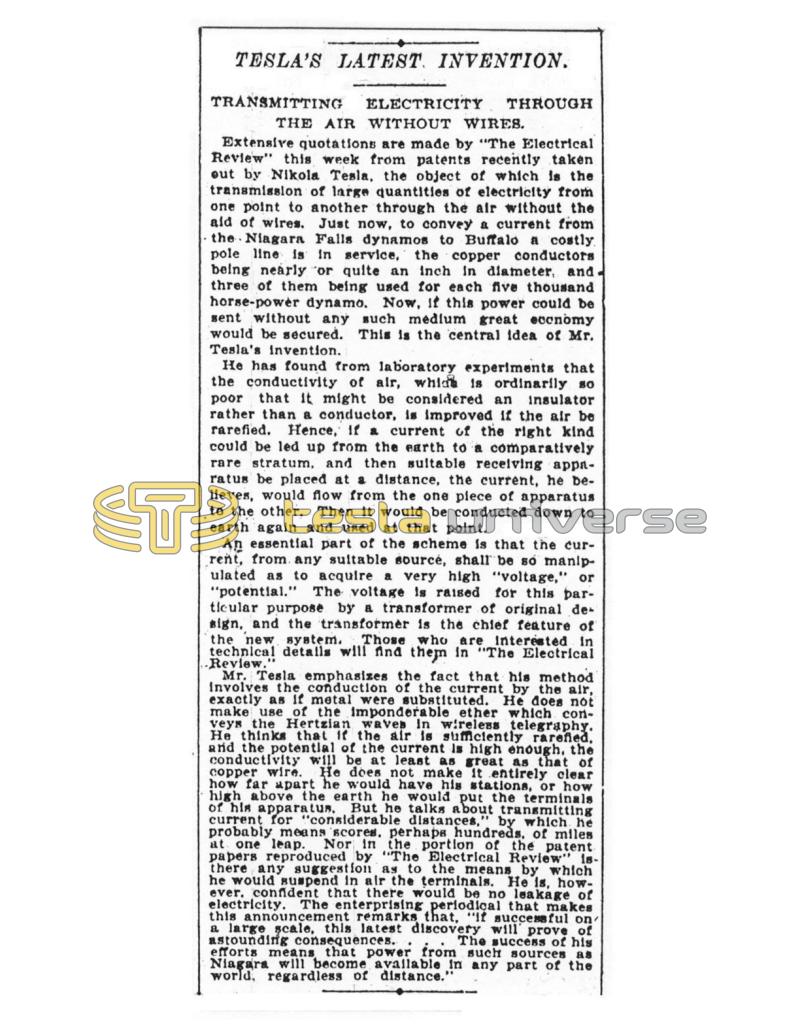
Nikola Tesla Articles
Tesla's Latest Invention - Transmitting Electricity Through the Air without Wires
Extensive quotations are made by “The Electrical Review” this week from patents recently taken out by Nikola Tesla, the object of which is the transmission of large quantities of electricity from one point to another through the air without the aid of wires. Just now, to convey a current from the Niagara Falls dynamos to Buffalo a costly pole line is in service, the copper conductors being nearly or quite an inch in diameter, and three of them being used for each five thousand horse-power dynamo. Now, if this power could be sent without any such medium great economy would be secured. This is the central idea of Mr. Tesla’s invention.
He has found from laboratory experiments that the conductivity of air, which is ordinarily so poor that it might be considered an insulator rather than a conductor, is improved if the air be rarefied. Hence, if a current of the right kind could be led up from the earth to a comparatively rare stratum, and then suitable receiving apparatus be placed at a distance, the current, he believes, would flow from the one piece of apparatus to the other. Then it would be conducted down to earth again and used at that point.
An essential part of the scheme is that the current, from any suitable source, shall be so manipulated as to acquire a very high “voltage,” or “potential.” The voltage is raised for this particular purpose by a transformer of original design, and the transformer is the chief feature of the new system. Those who are interested in technical details will find them in “The Electrical Review.”
Mr. Tesla emphasizes the fact that his method involves the conduction of the current by the air, exactly as if metal were substituted. He does not make use of the imponderable ether which conveys the Hertzian waves in wireless telegraphy. He thinks that if the air is sufficiently rarefied, and the potential of the current is high enough, the conductivity will be at least as great as that of copper wire. He does not make it entirely clear how far apart he would have his stations, or how high above the earth he would put the terminals of his apparatus. But he talks about transmitting current for “considerable distances,” by which he probably means scores, perhaps hundreds, of miles at one leap. Nor in the portion of the patent papers reproduced by “The Electrical Review” is there any suggestion as to the means by which he would suspend in air the terminals. He is, however, confident that there would be no leakage of electricity. The enterprising periodical that makes this announcement remarks that, “if successful on a large scale, this latest discovery will prove of astounding consequences.... The success of his efforts means that power from such sources as Niagara will become available in any part of the world, regardless of distance.”
